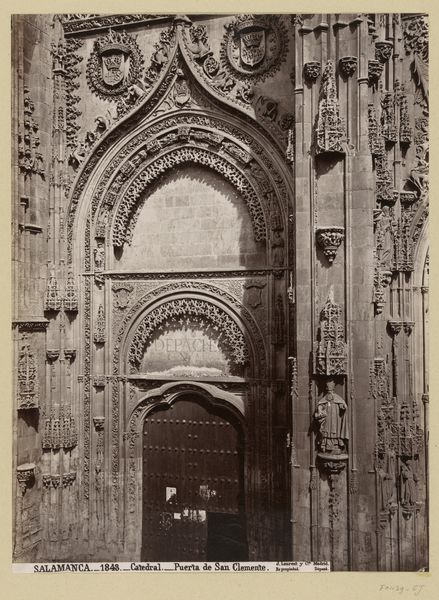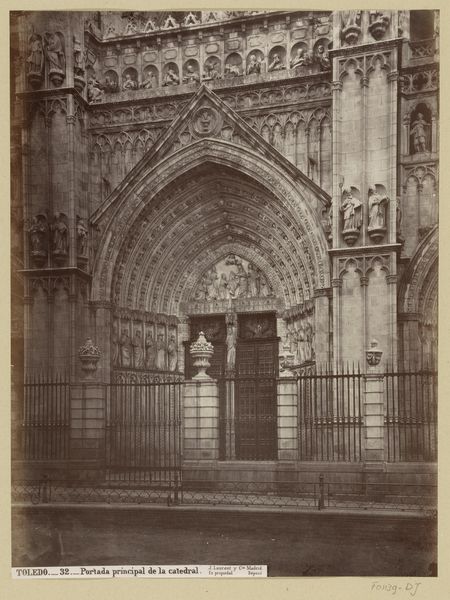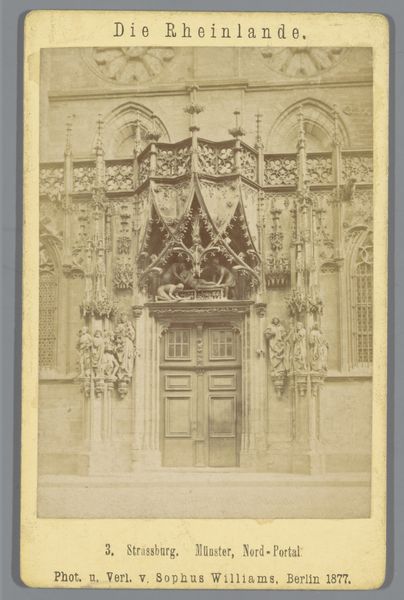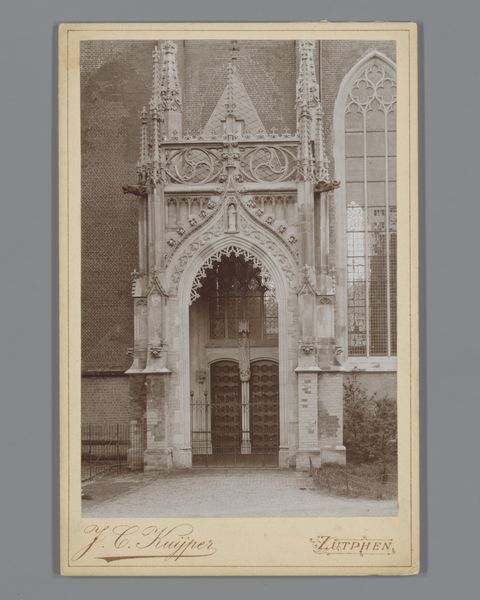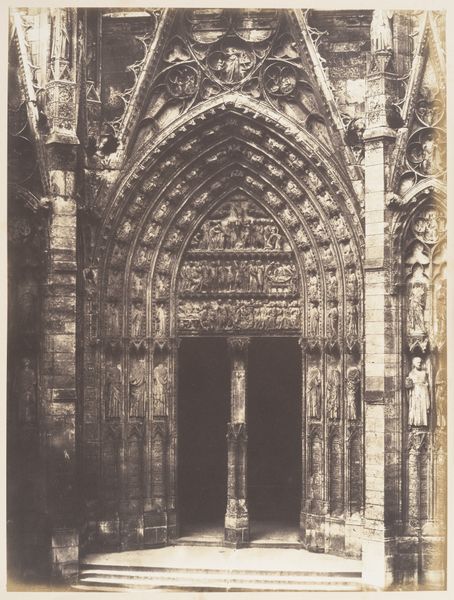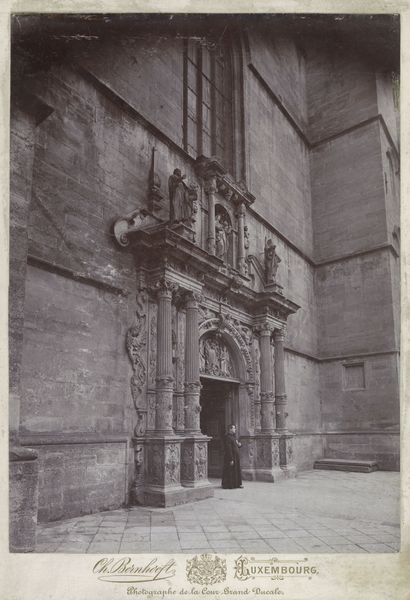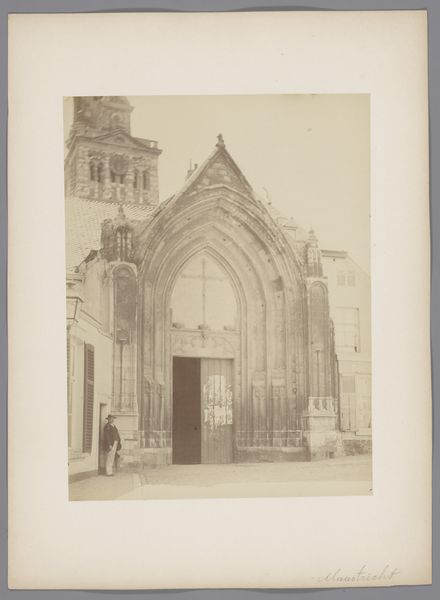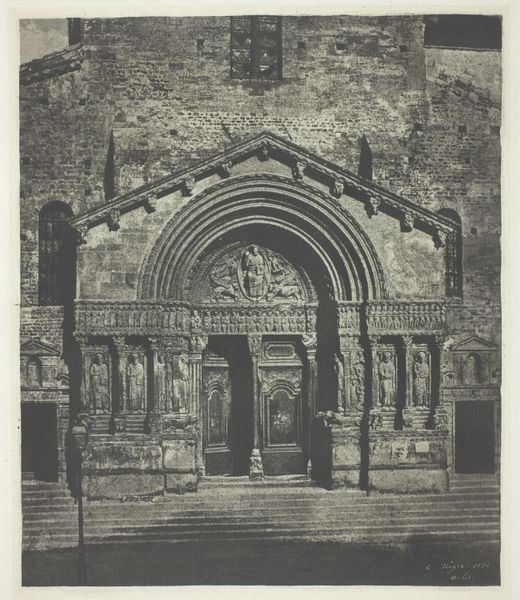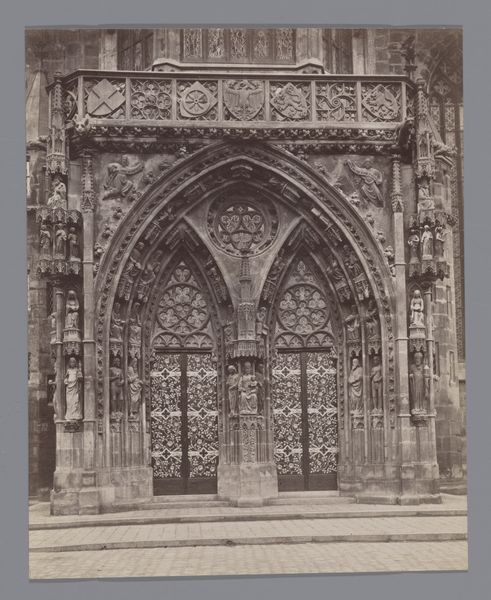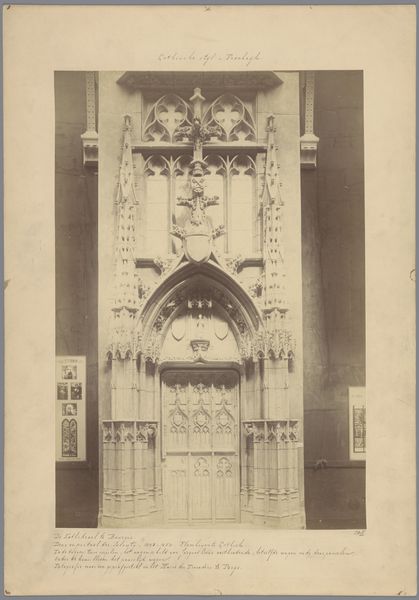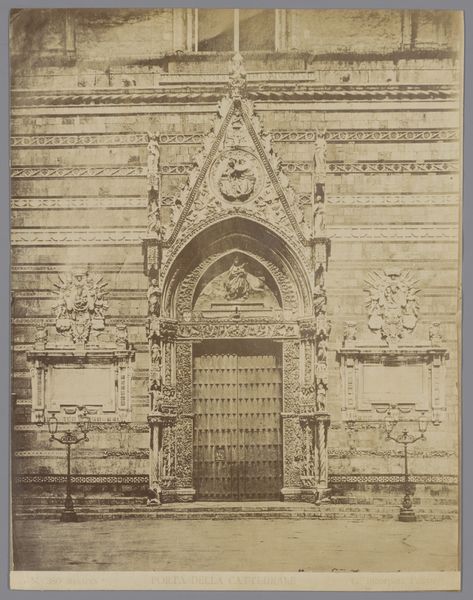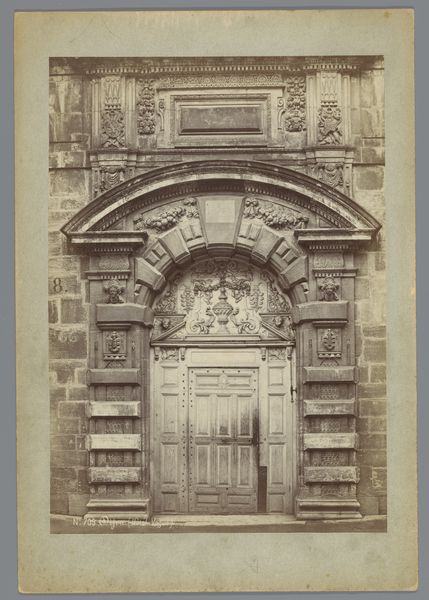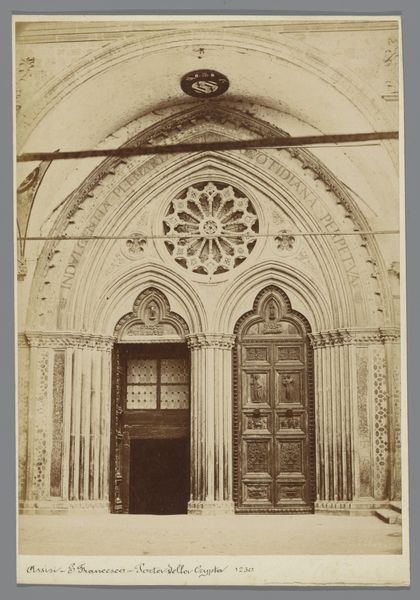
print, daguerreotype, photography, sculpture, architecture
#
aged paper
#
toned paper
#
medieval
# print
#
landscape
#
daguerreotype
#
historic architecture
#
photography
#
carved into stone
#
sculpture
#
19th century
#
architecture
#
historical font
#
statue
Dimensions: height 336 mm, width 254 mm
Copyright: Rijks Museum: Open Domain
Curator: This is a photograph taken by Juan Laurent between 1856 and 1863, depicting the portal of the Santa Cruz la Real church in Segovia, Spain. It's a daguerreotype, now held at the Rijksmuseum. The photograph beautifully captures the intricate details of the stone carvings. What’s your immediate reaction to this piece? Editor: It evokes such a strong sense of the medieval, doesn’t it? The image feels heavy, almost weighed down by the sheer density of the carvings and figures around the entrance. The light emphasizes the depth and dimensionality of every little element of this portal. Curator: Absolutely. Laurent's choice to photograph architecture is fascinating. During this period, photography was starting to transform how Europeans documented and understood their built heritage. Photographs like this offered an unprecedented level of detail to those who couldn’t visit in person, democratizing access to architectural wonders. Editor: The Christian iconography is immediately apparent—the crucifixion at the top, the saints flanking the entrance. Given its placement over a doorway, do you think that this particular display of imagery might function as a spiritual invitation, or perhaps even a warning, for those about to enter? Curator: Indeed. Church portals are inherently liminal spaces, where the earthly and the divine meet. Consider, also, the politics involved in the display of that religious iconography, during the 19th century. How would the photograph have been received in a Europe undergoing secularization, yet still steeped in religious tradition? Editor: That’s a crucial point. The very act of meticulously capturing these religious symbols perhaps indicates a desire to preserve a vanishing cultural identity or ideal. Beyond the overt Christian imagery, I wonder what other, perhaps less visible, cultural memories this photograph might hold? What hidden meanings lie within the stone and light? Curator: The photograph is really a lens onto a society in transition, documenting both its artistic achievements and the changing values that shaped its perception. It reminds us of the public role architecture plays. Editor: For me, this photograph feels like a doorway not just into a physical space, but into a rich tapestry of cultural beliefs, hopes, and fears that resonate even today. It really gives you an idea of how much memory architecture embodies.
Comments
No comments
Be the first to comment and join the conversation on the ultimate creative platform.
